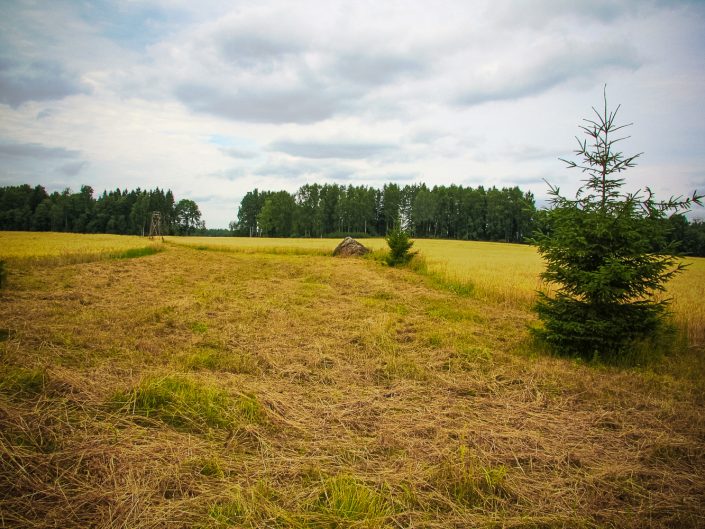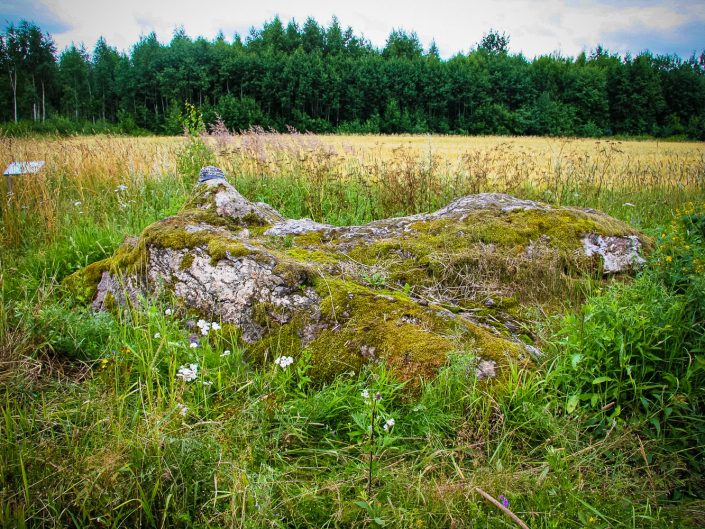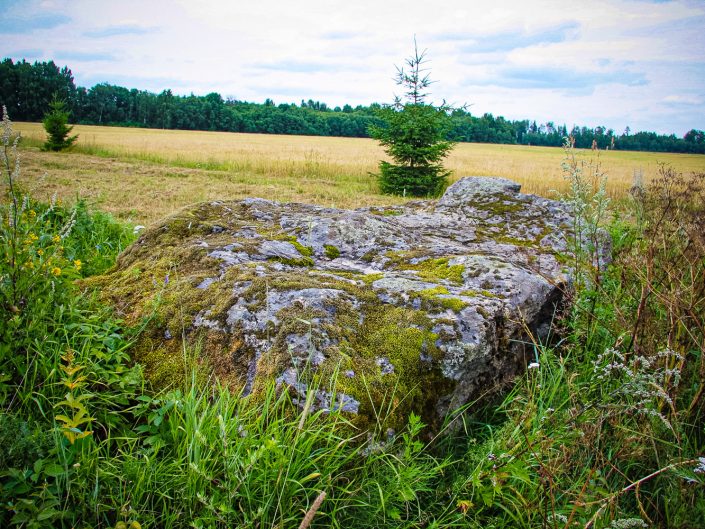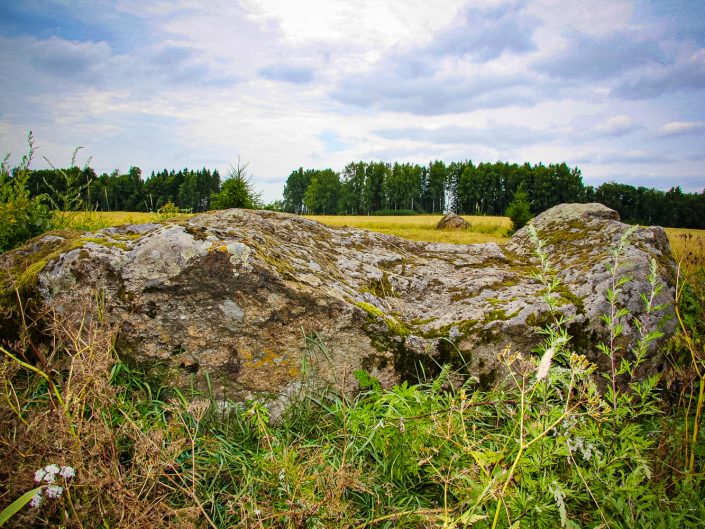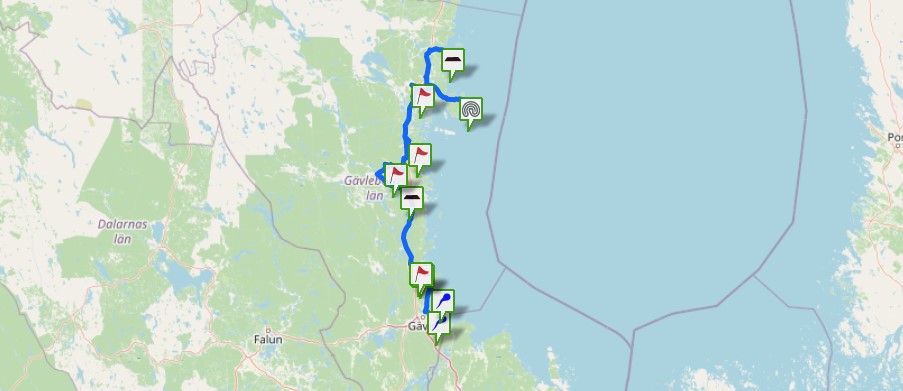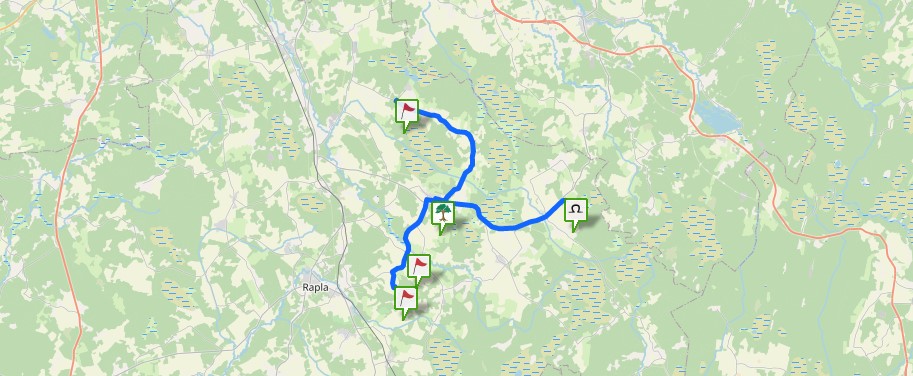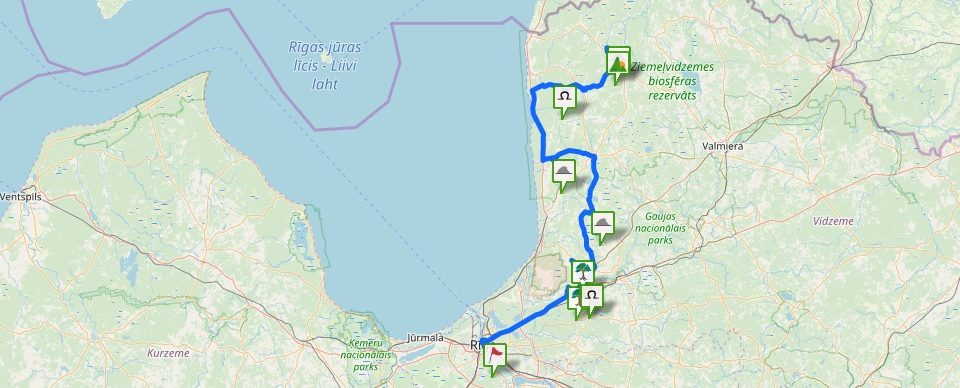State archaeological heritage (State Inspection for Heritage Protection, No 2468). 4.3 m long, 3.1 m wide and 1.1 m high; dimensions of the pile: 5.00 m and 3.85 m, circumference of 12.1 m, volume of 6 m³. Shape of the stone — irregular, flattened loaf-like with an inward-bent top (a large trough-shaped hollow). The stone has not been moved. 42 m N from the Devil’s Bed Stone, in an open field there is another secular stone of local significance (3.5 x 3.2 x 1.8 m, volume of 8 m³), the connection of which to the nearby Devil’s Bed is not known at the given moment. However, it is unlikely that the stone lying so close to the heritage Devil’s Bed Stone could have stayed without any attention in ancient times. (A. Grīnbergs, 2010)
There is a legend about the Devil and how he treated his mother on the stone. “The Devil collected stones and hurried to Strencis to fill up the Gauja River [the rapids upwards the Krāči Mill]. He urged his mother to go with him, but she refused. The Devil locked her to a stone and left, however, his intention was destroyed by the ancestors’ clock – the rooster. The Devil returned, found his mother locked at that very place and raped her because she had not rushed to help him. At that time, when devils were very busy with making bridges and filling up rivers, at the place where the stone lies there was a sea. To punish the Devil for what he did the God locked him to a rock on the seacoast. The stone is said to feature the hollows which are exactly like the ones that could be left by a person lying on one’s back in a soft place and there is also a notch the Devil made by his foot nails when throwing himself on his mother. The person who saw the stone did not mention to me the name the local people used to refer to the stone, however, in his own article he mentioned a bed therefore I believe that it was called “the Devil’s Bed” which will be heard from the locals” (National History Museum of Latvia, Naukšēni Parish. Reported by K. Bukums, 1926)

